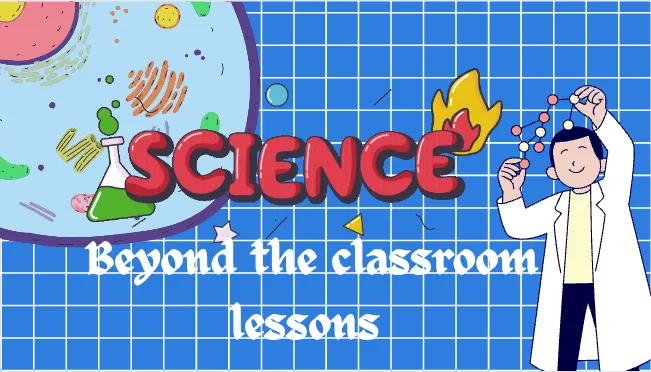
Canva
While at high school, I was quite interested in science which really ignited my curiosity about how the natural world operates. However, as time went by, I came to realize that real scientific work is far different from what we encountered in our classes. The way science was taught to us didn’t capture the whole problem of using those principles in real life.
Although I did not pursue a pure science course at university, I want to discuss the difference between classroom teaching and practical scientific work from my son’s experiences. Additionally, I would like to probe into how we can fill this gap by offering more opportunities for experiential learning.
In his last year of high school my son had a chance to participate in the school science fair. By then, his science classes largely involved reading on scientific concepts and doing simple experiments originating from step-by-step manual guidance. However, during the science fair pupils were tasked with coming up with their own research question as well as developing an experiment from scratch for testing their hypothesis.
It made me so excited when he narrated his science fair topic and what he wished to investigate because it would give me firsthand experience of real-world science. My son decided to look into how different variables like soil pH and fertilizer levels influenced plant growth. He conducted trials over a few weeks in which bean sprouts were grown under varying conditions.
Although he recorded in detail both the procedures employed and the outcomes, quite a number of problems always arose along the way. Some seeds did not germinate while others rotted with molds or pests devoured them. Through trial and error, however, he found out improved techniques. Ultimately, this project taught him important aspects about scientific research as an iterative process.
Now let us focus on the merits of experiential training. There are several advantages my son gained by doing an independent science fair project compared to typical classroom labs. First of all, it gave him a deeper understanding of science as a whole. Instead of simply following instructions from textbooks, he had to think critically when making his own hypothesis and setting up experiments that have many steps for example . Also, this kind of hands-on learning made the lessons more interesting and memorable for him than any amount of book reading could ever do.
But, most importantly he was exposed to challenges and a lot of problem solving during the project that kept on inspiring my kid into science. Before this point, he had no idea about what he wanted to study while in high school, but the research project sparked off his interest in research. He now takes more advanced science classes and is even considering careers related to science. It means that if we have more real-world research experiences in our classrooms it could lead to increased motivation for many students.
Achieving Classroom Improvement
Based on my son’s science fair project, here are some awesome ways schools can make practical learning play a bigger role in class lessons.
Short Research Assignments
What if we turned these 2-3 weeks scattered throughout the year into mini-research projects? They would be an excellent way for students to constantly practice their experiment design skills without having to spend too much time on them.
Project-Based Labs
Instead of conducting those monotonous verification labs, why not introduce tougher laboratory experiments? You know, where students have to solve actual problems or test different variables. This is one method through which they will get a taste of what true scientists go through.
Community Collaboration
It is best that schools partner with local scientists, parks, or museums! They can be taken on field trips where they can do some real life data collection, citizen science activity, or even get apprenticeship placements. It’s all about going out there and learning about the world.
Research & Development Classes
There should be elective research & development project classes for high school students. This will enable students to deeply probe into their own long-term investigations as guided by our amazing instructors. It is all about discovery and innovation!
I think that if we increase the chances of students having these experiential learning opportunities, it will boost their scientific knowledge and love. Furthermore, it would prepare them for various STEM professions which are research oriented.
Conclusion
By sharing the science fair project my son had to go through, it was not for any other purpose rather than to illustrate to you how practical research can be very inspiring and greatly helps in learning. This is not to undermine classroom teachings, they are necessary for introduction of scientific ideas but they do not stand for science itself. Therefore we must rev up our classroom science teaching with more mini-researches of less term duration, open-ended experiments and partnership with local communities as well. More students will enjoy studying science as they will actually handle investigating something by themselves. So, to motivate future scientists, experiential learning should become a strong part of STEM education.